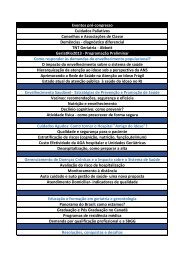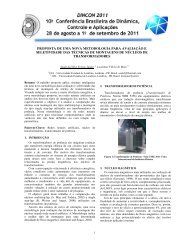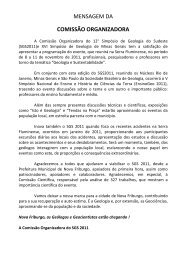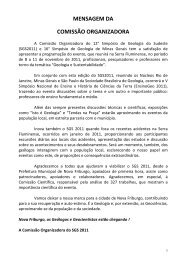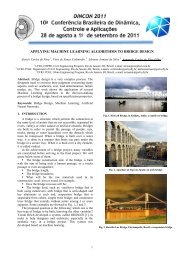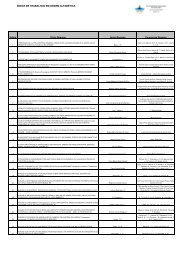Here - Meta Marketing e Eventos
Here - Meta Marketing e Eventos
Here - Meta Marketing e Eventos
- No tags were found...
You also want an ePaper? Increase the reach of your titles
YUMPU automatically turns print PDFs into web optimized ePapers that Google loves.
22 nd Salt Water Intrusion Meeting: Salt Water Intrusion in Aquifers: Challenges and PerspectivesMODELLING AND GROUNDWATER MANAGEMENT OF A KARSTIC COASTALAQUIFER: THE CASE OF SALENTO (APULIA, ITALY)Polemio M. 1 , Romanazzi A. 21. CNR–IRPI, Bari, Italy, m.polemio@ba.irpi.cnr.it2. Ph.D student - Università di Bari "Aldo Moro" – DISAATKeywords: Seawater intrusion, groundwater modelling, groundwater management, coastalkarstic aquifer1. INTRODUCTIONThe coastal karst aquifers are known to be highly vulnerable to anthropogenic and naturalchanges, and in particular to the overexploitation of groundwater resources. The highdegree of vulnerability is due to their intrinsic characteristics, anthropogenic pollution,and the effects seawater intrusion. The progressive population concentration in coastalareas and the increasing discharge overlapped to peculiarities of karstic coastal aquifersconstitute a huge worldwide problem, particularly relevant for coastal aquifers of theMediterranean basin. In Italy, Apulia, with its coastline extending over 800 km, is theregion with the largest coastal karst aquifers. The predominant karstic Apulian featuresmake the region extremely poor of surface water resources and rich of high qualitygroundwater resources. These resources still allow the social and economic developmentof population, improving agricultural and tourist opportunities. The continuous increasingwell discharge causes or contributes to the groundwater quality degradation, often makingthe groundwater unusable for irrigation and drinking (Polemio et al. 2009). The strategicimportance of groundwater resources and its wise management for Apulian population isdue to these risks (Cotecchia and Polemio 1998, Margiotta and Negri 2005). The aim ofthis study is to define the efficacy of existing management tools and to develop predictivescenarios to identify the best way to reconcile irrigation and drinking water demands withenduring availability of high quality groundwater. The Salento (Salentine Peninsula), wasselected being the Apulian aquifer portion exposed to the highest risk of qualitydegradation due to seawater intrusion.2. STUDY AREAApulia can be described distinguishing four main hydrogeological structures (HSs),Tavoliere, of clastic nature (Quaternary), and Gargano, Murgia, and Salento, constitutedby limestone and dolostone, which constitute a typical karstic environment (Fig. 1).Focusing on the contiguous Murgia and Salento HSs, from a geological point of view, theyconsist of almost similar Mesozoic carbonate rocks but show different hydrogeologicalcharacteristics. In particular, the Quaternary tectonic differential movement between thetwo hydrogeological structure put the Salento in condition to drain a large amount ofMurgia groundwater (Cotecchia 1979). The Salento feed coming from Murgia isdischarged through some Ionian and Adriatic coastal springs located in the northernSalento. The selected study area was the southern Salento, where the aquifer recharge isonly due to the direct rainfall infiltration. The landform is at horst and graben, where the20



